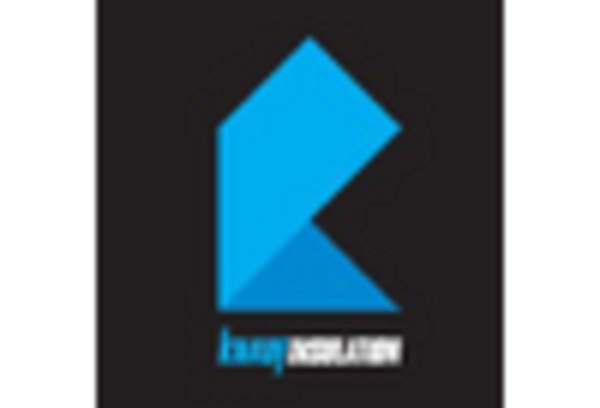Aesthetic Versatility
The aesthetic versatility of exterior insulation-finish-systems serves as a compelling driver for the market. These systems allow for a wide range of design options, enabling architects and builders to create visually appealing structures. The ability to customize colors, textures, and finishes makes these systems attractive for both residential and commercial projects. As design trends evolve, the exterior insulation-finish-system market adapts to meet the aesthetic preferences of consumers. This adaptability not only enhances the appeal of buildings but also contributes to the overall market growth, as more projects incorporate these systems to achieve desired visual outcomes.
Energy Efficiency Regulations
The increasing emphasis on energy efficiency regulations in the United States is a primary driver for the exterior insulation-finish-system market. Government initiatives, such as the Energy Policy Act, mandate stricter energy performance standards for buildings. This has led to a growing demand for insulation solutions that enhance thermal performance. The exterior insulation-finish-system market benefits from these regulations, as they provide effective solutions for reducing energy consumption. In fact, buildings utilizing these systems can achieve energy savings of up to 30%. As energy costs continue to rise, compliance with these regulations becomes crucial for builders and developers, further propelling the market's growth.
Rising Construction Activities
The resurgence of construction activities across the United States significantly impacts the exterior insulation-finish-system market. With urbanization and population growth, there is an increasing demand for residential and commercial buildings. According to the U.S. Census Bureau, construction spending reached approximately $1.5 trillion in 2025, indicating a robust market environment. This surge in construction activities creates opportunities for the adoption of exterior insulation-finish-systems, which are favored for their energy efficiency and aesthetic appeal. As builders seek to meet the growing demand for new structures, the market is likely to experience sustained growth driven by these construction trends.
Consumer Awareness of Energy Costs
Consumer awareness regarding energy costs is a significant driver for the exterior insulation-finish-system market. As energy prices fluctuate, homeowners and businesses are increasingly seeking solutions to reduce their energy bills. The exterior insulation-finish-system market offers effective insulation solutions that can lead to substantial energy savings. Studies indicate that buildings with these systems can reduce heating and cooling costs by up to 25%. This heightened awareness encourages consumers to invest in energy-efficient building materials, thereby driving demand for exterior insulation-finish-systems. As more individuals prioritize energy efficiency, the market is poised for growth.
Increased Focus on Building Resilience
The growing focus on building resilience against climate change impacts is a notable driver for the exterior insulation-finish-system market. As extreme weather events become more frequent, there is a heightened awareness of the need for durable and energy-efficient building solutions. Exterior insulation-finish-systems provide enhanced protection against moisture, temperature fluctuations, and other environmental factors. This resilience is particularly appealing to builders and developers aiming to create long-lasting structures. The market is likely to benefit from this trend, as more stakeholders recognize the importance of investing in robust insulation solutions that can withstand changing climate conditions.

















Leave a Comment